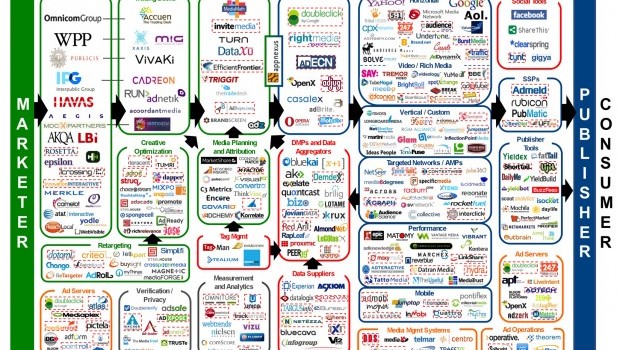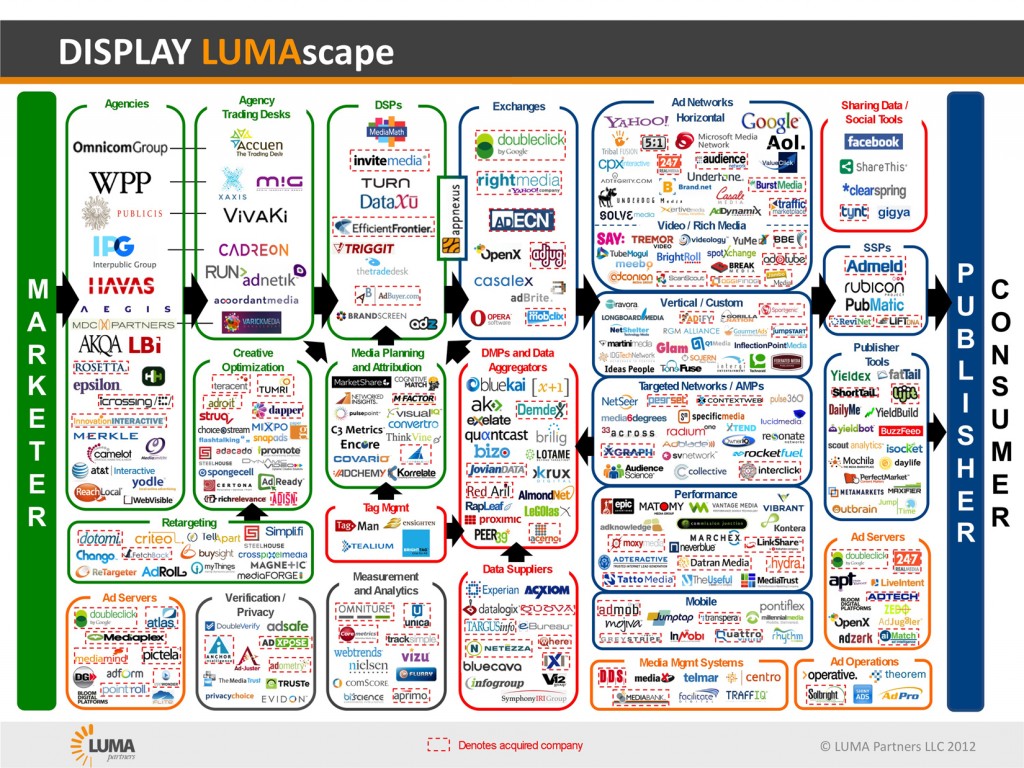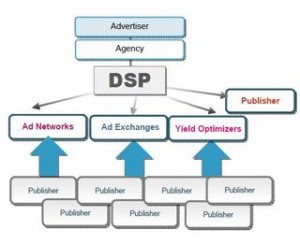
How to Decipher the Online Display Advertising Landscape
Online display advertising can be highly effective for branding and targeting customers. According to Wikipedia, “display advertisers use cookie and browser history to determine demographics and interests of users and target appropriate ads to those browsers.” Implementing display ads into your online marketing strategy can obviously get your message in front of your most intrigued audience. However, understanding the “display advertising technology landscape” can be a challenge when deciding who, or what, to use to grow your business online.
As the display ad landscape (which includes agencies, media buying platforms, publishers, ad exchanges/networks and more) evolves and new players come into the market, it only becomes more complex. To make life easier, here’s a cheat sheet (courtesy of LUMA Partners) to help guide you through the growing ecosystem of online display advertising:
Looks like quite a list, eh? You may be asking yourself, who are these companies, what do they do, and how do you use them? Let’s break it down, cover a few things to keep in mind, and walk through the basics to get you started.
Agencies
If you decide to work with an agency, finding the right the one is important to the success of your campaign. The agency should serve as your partner; it’s important they understand your company’s needs and help you accomplish your goals. A few things to consider: the history of the agency, expertise, cost, what they offer, and who will be on the team… are they a good fit? Check out the chart above for a few agencies you might want to consider.
Agency Trading Desks
Trading desks are often used by an agency or marketing department to buy and manage online media. Forrester Research describes a buying platform as, “A centralized, service-based organization that serves as a managed service layer, typically on top of licensed demand side platform and other audience buying technologies.” You can see an example of the agencies that have trading desks in the chart above. They can offer benefits such as better targeting and hopefully ROI on dollars invested.
Publishers
Publishers are owners of a web property. If you decide to buy directly, you can work with the publisher to help accomplish your goals. Ask a lot of questions, and always negotiate price. Voice your concerns if you don’t see the results you were hoping for. Publishers don’t want to lose your media dollars, and they’ll work hard to ensure your campaign is a success. Consider the following: Do you have the right mix in place? Are you targeting the correct audience? Does your messaging and creative align with your audience?
Ad Exchanges
Ad exchanges are a marketplace that facilitates the buying and selling of inventory. Ad exchanges were developed to provide advertisers better access and control over ad inventory. A familiar and commonly used ad exchange is DoubleClick. Transparency and control is in your hands here vs. using an Ad Network where you don’t always know which site might be serving your ad. Here’s a quick comparison of Demand Side Platforms (DSPs) vs. Ad Exchanges.
Ad Networks
Ad Networks run display ads across various online publishers, providing access to more online inventory. Think about your media mix and test a few networks to see how they each compare in regards to inventory, scale and performance. Advertisers generally like to have a variety of networks in their campaigns. Look for unique inventory and overlapping between networks. According to their latest research, comScore Media Metrix ranks Google Ad Network #1 with a 92.6% reach, Specific Media 85.8%, Vibrant Media 84.7%, AOL Advertising 84.1% and AT&T AdWorks 82.4%.
As you take a look at the growing display ad landscape, evaluate each of the players with your business needs in mind. You should build a strategy around a mix of them to get you closer to your customers and your goals.
Can’t get enough? Here are a couple more marketing landscapes for Search and Mobile.
Sources:
- Mapping the Display Landscape by netmining
- Display LUMAscape by Luma Partners
Michelle Carranza is a Contributing Author for VerticalResponse.
© 2012 – 2018, Contributing Author. All rights reserved.





